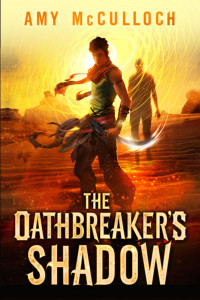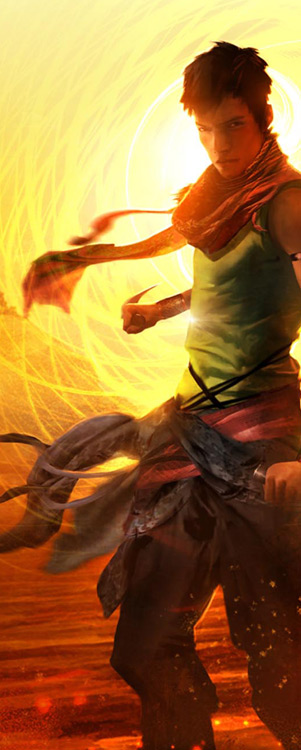
I’m going to say some stuff about Young Adult fiction. Some of it’s going to be really wrong, but I’ll hedge by saying it’s my interpretation. Let’s try not to crucify me for it.
For me, what makes a book Young Adult isn’t the age of its protagonist, simplicity of story, or basic themes. Instead, it requires some didactic aspect. For example, Paolo Bacigalupi’s Shipbreaker isn’t just a fucked-up coming of age story, but a teaching tool for conceptualizing climate change, as well as refining mores for peer group interactions. I would argue the weakest part of the novel is its plot and protagonist, both of which feel cookie-cutter. What makes it successful for young readers is what it imparts. Thusly, I would argue, until I’m blue in the face, that Raymond Feist’s Riftwar Saga or David Edding’s Belgariad are not Young Adult. I would prefer to call them fiction for all ages. In other words, they tell a story that’s easy to understand for young readers, but does absolutely nothing to recommend it as something that ought to be targeted to them. I make this distinction because Amy McCulloch’s The Oathbreakers Shadow is a Young Adult novel, and a fine one at that.
Fifteen-year-old Raim lives in a world where you tie a knot for every promise that you make. Break that promise and you are scarred for life, and cast out into the desert.
It wouldn’t be until they reached the Honour Age – sixteen – that a true promise could be made. And a true promise had serious consequences. Breaking a knotted promise meant excommunication to the desert in Lazar, with the community of exiled oathbreakers known as the Chauk.
In training to become an elite member of the Yun guard, Raim discovers an unknown promise made on his behalf. When binding his life to his best friend (and future king), Khareh, the string that had been tied to his wrist from birth bursts into flames and sears a dark mark into his skin. Scarred as an oath-breaker, Raim has two options: run, or be killed.
At its heart, The Oathbreaker’s Shadow is about forgiveness and tolerance. It’s about reconciling absolutes against reality, where nothing is ever one-hundred percent anything. Raim begins in a world defined by fidelity above all else. To break faith, for even the most minor of commitments after adolescence, is to invite banishment and scorn. These concepts are why I call McCulloch’s novel Young Adult. She takes a basic moral concept and pumps up the volume to a level that presents instructional scenarios for younger readers.
[…] the elders would stop scolding and smile a little to themselves, for they knew it was important for young children to test the consequences of their actions, so that they knew what to do when they were ready to make real promises.
 Beyond the didactic, McCulloch composes a gorgeous story involving a young man coming in to his own. Not only does he have to overcome the shame of mistakes couched in his own culture, he has to grow beyond a constrained perspective to survive in a new one. To that end, Raim undertakes a journey across a desert to a culture he’s demonized his entire life.
Beyond the didactic, McCulloch composes a gorgeous story involving a young man coming in to his own. Not only does he have to overcome the shame of mistakes couched in his own culture, he has to grow beyond a constrained perspective to survive in a new one. To that end, Raim undertakes a journey across a desert to a culture he’s demonized his entire life.
In that way, The Oathbreaker’s Shadow reminds me quite a lot of Courtney Schafer’s The Whitefire Crossing. Where Raim’s quest leads him from a sheltered life to a worldly one, Schafer’s characters take the reverse journey. However, in both cases, the journey forces change and examines the symbiotic nature of friendship, social taboos, and overcoming bias to find the truth. There’s also a fair bit of adventuring thrown in to the mix.
Raim is a warrior who doesn’t hesitate to grab his sword and go to toe-to-toe with his enemies. And McCulloch doesn’t shy away from the violence.
That last bit is worth focusing on for a moment because, despite some of the heavy themes mentioned above, The Oathbreaker’s Shadow is great fun to read. Raim is a warrior who doesn’t hesitate to grab his sword and go to toe-to-toe with his enemies, and McCulloch doesn’t shy away from the violence. Nor does she fail to hold her characters at risk, a fact that becomes heartrendingly clear as the novel winds to a conclusion. Raim is eventually joined with an adventuring partner, a female nomad named Wadi, who has all the answers he lacks. The combination of the two as they interact throughout the story is reminiscent of the buddy-combo so prevalent throughout fantasy literature (see Fafhrd and the Gray Mouser, Raistlin and Cameron, Royce and Hadrian, etc.). It works to great effect here as well, particularly when Raim’s oathsworn friend Khareh reenters the fray.
If there’s one black mark against the novel, it would be that it’s not, in itself, a completed arc. Raim, Wadi, Khareh, and the rest are very much in lurch in the novel’s conclusion, awaiting a resolution in the second half of McCulloch’s planned duology. She finds a natural point to cut, but in true fantasy tradition the final chapter and epilogue pose nearly as many questions as they resolve.
The Oathbreaker’s Shadow [is] the kind of important Young Adult novel that will appeal to readers of all ages.
Even still, adventure, combined with interesting world building and meaningful thematic touchstones, makes The Oathbreaker’s Shadow the kind of important Young Adult novel that will appeal to readers of all ages. It’s clear to me that Amy McCulloch, a debut novelist here, but commissioning editor at Harper Voyager by day, has a strong understanding of what makes story tick. I would happily recommend it to my children, and to my mother, and to anyone else that has a desire to read interesting, exciting, and digestible fiction.


I like the notion of YA as didactic. I’ve also heard it described as a story in which the main characters are young and in some ways naive, but by the end of the story they have become a little more adult. Whether it’s a full-fledged coming of age, a specific issue novel, falling in love for the first time or learning your whole society is a lie– whatever. You grow up a little bit and have the blinders removed. You’ve dealt with an adult thing for the first time, and you’re no longer entirely a child.
(PS I found this blog recently and I love it!)